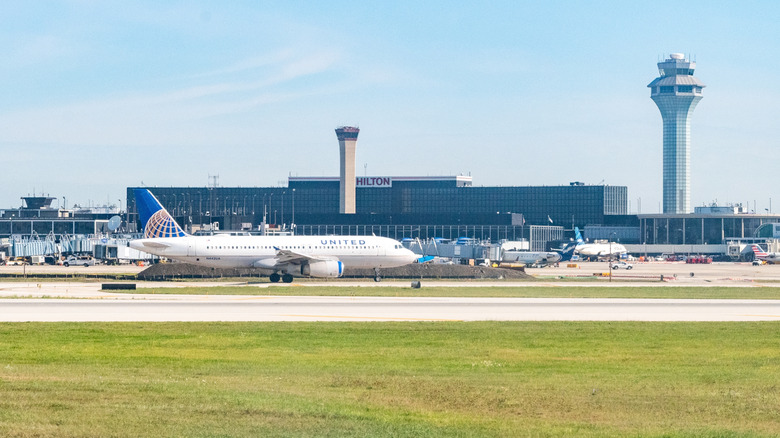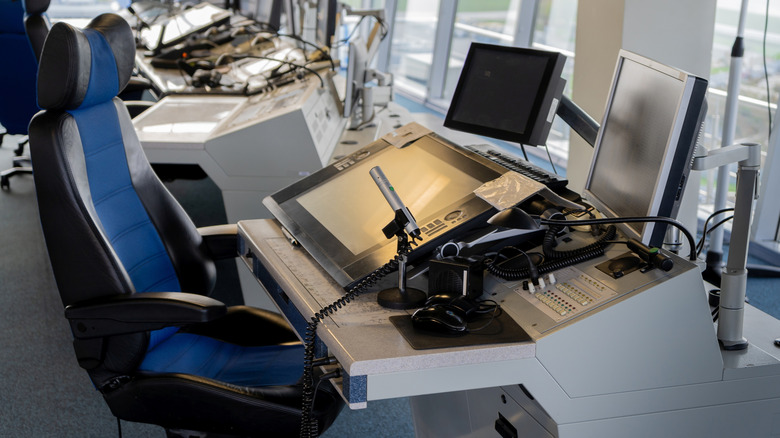What Actually Happens At The Airport During An Air Traffic Control Shortage?
While there have been utterly bizarre reasons flights have been delayed, more often than not, planes are grounded because they cannot take off and fly safely. Mechanical issues are usually resolved quickly — carriers will change aircraft to avoid long delays or fix the problem on-site — but staff-related issues are more complex and sometimes fall outside of an airline or carrier's control. This is the case for air traffic controllers, who are crucial to the management of airspace traffic.
Staff shortages in the aviation industry have been a concern since the COVID-19 pandemic because of a myriad of reasons, including a lack of funding. The Federal Aviation Administration (FAA) reported a shortage of about 3,000 air traffic controllers in July 2025, along with its plans to increase and speed up training and hiring. In understaffed regions, air traffic controllers have already been clocking more overtime than ever.
Air traffic controllers are employed by the FAA, and because they are deemed essential workers, they are required to work even during prolonged government shutdowns with reduced or no immediate pay. A government shutdown, especially one that extends over weeks, causes financial stress, with air traffic controllers calling in sick so they can work other jobs to make ends meet. In an already understaffed industry, a handful of workers not showing up for work causes major issues. Depending on their destinations, travelers should anticipate delays in airports that don't have enough air traffic control staff or the equipment to operate without them.
Prolonged traffic control staff shortages could translate into more flights being delayed
The FAA Air Traffic Organization found that services were provided to an average of 44,000 flights every day in 2024. During peak operational hours, there are as many as 5,500 planes in the air, so it's easy to imagine that a shortage of air traffic controllers can cause major disruptions. In fact, flight delays and cancellations are one of the most common consequences of air traffic control shortages on airport operations.
Although things are getting tense between pilots and air traffic controllers, pilots rely on air traffic controllers to navigate tough conditions, such as bad weather, when visibility could be compromised, and direct them to avoid collisions with other planes. There are other ways to be in touch with people on the ground, but communication with air traffic controllers makes the flying process easier and less risky. Fewer air traffic controllers overseeing incoming and outgoing flights means there is less capacity for aircraft to be taken care of, causing disruptions in travel itineraries.
A delayed or cancelled flight is never something travelers are happy about — no matter how fancy, no traveler wants to linger in the airport lounge longer than they need to. As the number of flights keeps increasing and staff numbers struggle to keep up, flyers should not plan a trip without taking critical precautions.

